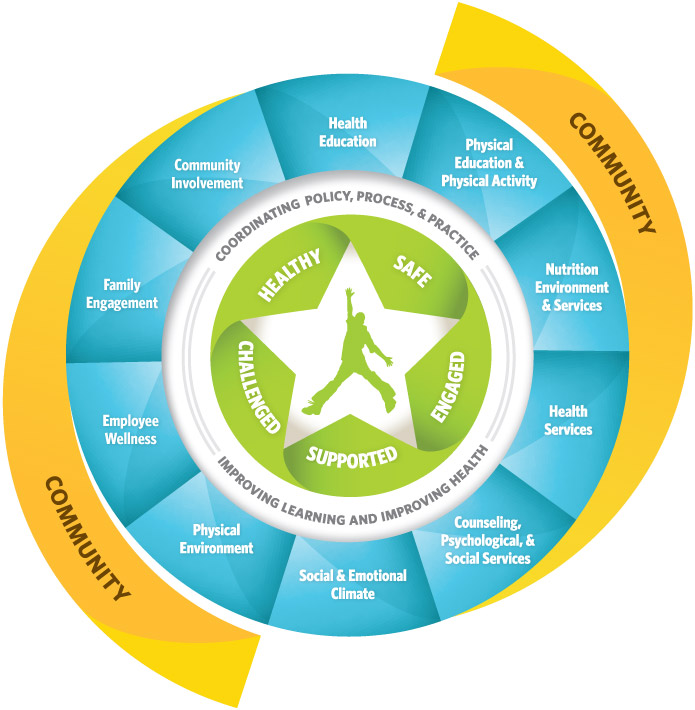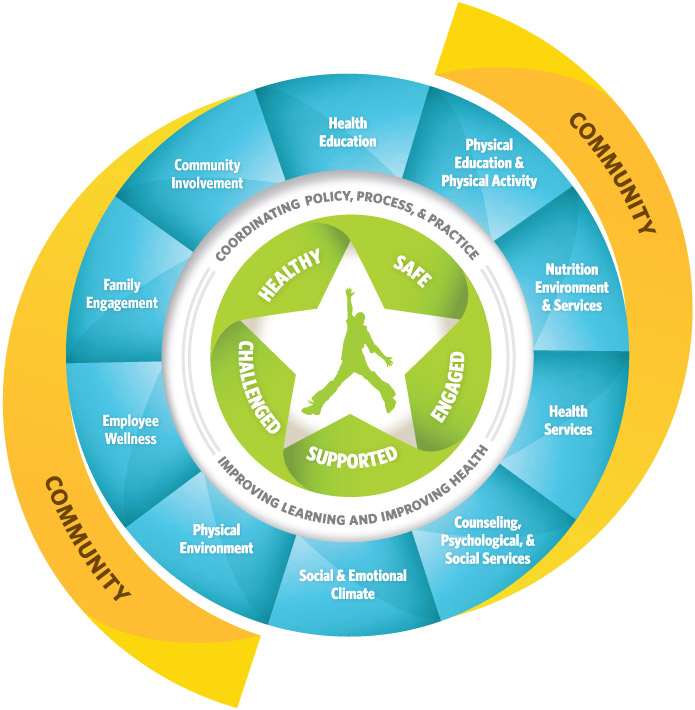Research tells us that establishing healthy behaviors during childhood is easier and more effective than trying to change unhealthy behaviors during adulthood. We also know that there is a symbiotic relationship between learning and health and schools can play a critical role in promoting the health and well being of students. Since its introduction in 1987 the traditional coordinated school health (CSH) model has addressed “whole-child” elements like school climate issues and student engagement. Over the last 2 years the new Whole School, Whole Community, Whole Child (WSCC) model has been recommended as a strategy for improving students’ health and learning in our schools. WSCC combines elements from two leading models addressing healthy schools, the Whole Child Initiative and the CSH approach. The marriage of these leading models promises to have a positive impact on students’ long- term well-being and development.1
How does the WSCC differ from the traditional CSH model? WSCC is an expansion and update of the CSH approach. WSCC responds to a call for greater alignment and integration between health and education. Whereas the original CSH model contained eight components, the WSCC contains 10 including the previous 8 and splitting health and safe school environment and family/community involvement into 4 distinct components. WSCC also highlights the role community agencies and the family must play.2
WSCC proposes a broader definition of achievement and accountability that promotes the development of children who are healthy, safe, engaged, supported, and challenged.3 This represents an important shift from an emphasis on standardized test scores and narrowly defined academic achievement to a broader perspective that promotes students’ long term educational attainment and healthy development.

Perhaps the most significant change is the role of the child. In the WSCC model attention is returned to the child. Health and education research shows the need to engage students as active participants in their learning and health. WSCC promotes the creating of meaningful roles for students as allies and decision makers in their schools and communities. In addition to building leadership skills engaging youth also creates a sense of belonging and purpose. When young people realize their opinions are being considered, they will feel they are part of the community and will work together to make their communities better places. WSCC acknowledges that learning, health, and the schools are part of and a reflection of the local community.4
The WSCC framework requires involvement from a broad group of stakeholders. We hope that you will advocate for and implement this model as we work together to keep our children healthy, safe, and engaged in the school and in the community. For more information please visit the Journal of School Health.
Sources:
- Lewallen, Theresa C. “The Whole School, Whole Community, Whole Child Model: A New Approach for Improving Educational Attainment and Healthy Development for Students” Journal of School Health, Nov 2015 Vol. 85 No. http://onlinelibrary.wiley.com/doi/10.1111/josh.2015.85.issue-11/issuetoc
- http://www.cdc.gov/healthyyouth/wscc
- http://www.ascd.org/programs/learning-and-health/wscc-model.aspx
- Morse, Linda L. “Placing Students at the Center: The Whole School, Whole Community, Whole Child Model” Journal of School Health, Nov 2015, Vol 85 No.11




